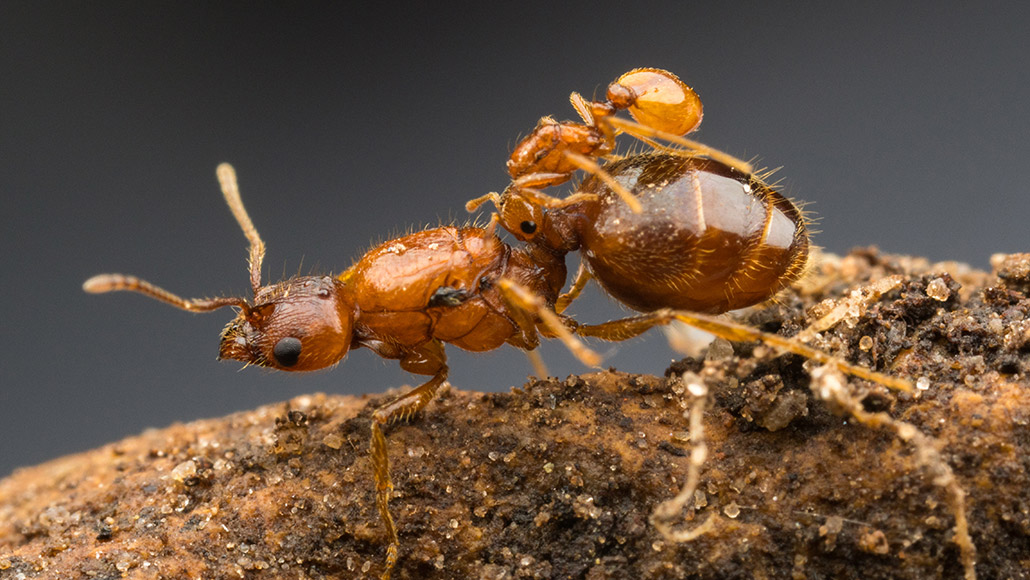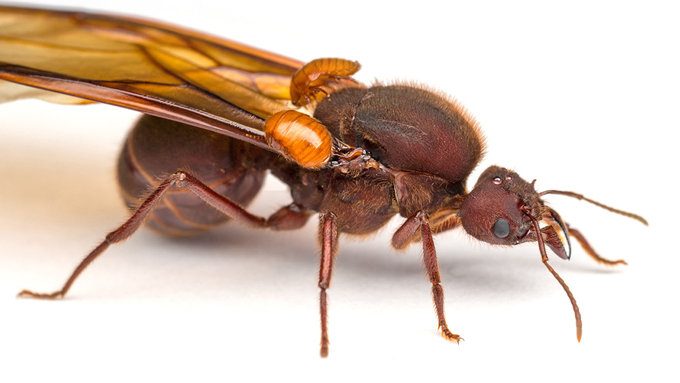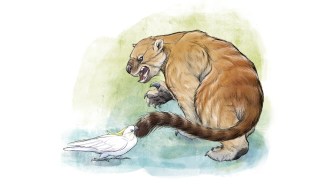Texas has its own rodeo ant queens
Finding a new species hardly ever happens like this

Meet a rodeo ant. The little ant on the big one’s back is a queen of a species discovered in Austin, Texas. It has the right mouthparts and head shape to grip the waist and ride on queen ants of the species shown here.
Alex Wild
Alex Wild has discovered new rodeo ants in, of course, Texas.
The shiny little reddish Solenopsis ants grip tight and ride the backs of big queen ants of a different species. It’s not, however, just random piggyback fun.
The little riders hang on with mouthparts that have evolved a snug fit around the waist of a particular species’ much larger queen, says Wild, a naturalist who curates the insect collections for the University of Texas at Austin. The smaller hangers-on are queens themselves, but in Texas he has yet to find their workers. So royal-on-royal rodeos might let a tinier parasitic queen skip the costs of creating her own entourage and just live off food scammed from the big queen’s colony.
Scams are a basic risk of social living and its alluring concentrations of resources. “We humans build cities,” Wild says. “All sorts of things come to hang around.” Same for ant nests; queen riding unlocks those riches for grifters of diverse species.
Like human dwellings, certain ant nests even attract their own miniature roaches, which do some queen riding themselves. With chubby, wingless bodies, Attaphila fungicola roaches “look like little Pokémon figures,” Wild says. When a young fungus-growing ant queen flies out of her mother’s nest for that once-in-a-lifetime bout of aerial sex, a wingless roach can latch on for a ride and, with some parasite luck, hitchhike to new food bonanzas.

Wild coined the nickname “rodeo ant,” but even before his discovery, biologists knew of a few species that hugged the backs of other species’ queens and probably sneaked food. A parasitic ant now called Tetramorium inquilinum, first found in the Swiss Alps, grows long claws and a concave rear underside that fits easily against the curving back of a big queen.
That clinging free-loader isn’t a waist-grabber, but Florida researchers found two different kinds that are. Specimens are sparse though. A single queen, shorter than a rice grain, turned up in 1992, mouth-clamped around the skinny waist of an unrelated kind of big-headed ant (Pheidole). After 14 years without finding another specimen, the researchers — sounding almost apologetic — gave their lone find a species name (Solenopsis phoretica) and described it as best they could. Two years later, they did slightly better, naming a second species (S. enigmatica) based on two queens, plus a few worker ants from the island of Dominica in the West Indies.
Wild unexpectedly joined the quest for these elusive queen-riding ants one March morning in 2017. “I wasn’t out there trying to discover anything,” he says. He was just stretching his legs at the Brackenridge Field Laboratory, an urban field station, reachable by Austin city bus. It was hardly unknown wilderness rustling with mysteries. Entomologists had worked over the ground for years.
Sign up for our newsletter
We summarize the week's scientific breakthroughs every Thursday.
For a break, “I walk the trails and … since I’m an ant biologist, flip over some stones to see what’s nesting under them,” Wild says. Under one sun-warmed stepping stone scurried a colony of a kind of big-headed ants. “I was most surprised to find something on the back of the queen ant,” he says.
That something was Texas rodeo ant new species No. 1. Still to be formally named, she’s a mouth-clamping Solenopsis ant, he reported on November 17 in St. Louis at Entomology 2019. The shape of her head and notched mouthparts allow a snug grip around the waist of the particular ant species she was riding. But now Wild was the one with the awkward single-specimen problem.
Eager for more rodeo ants, Wild urged students to leave no Brackenridge stone unturned. The particularly diligent Jen Schlauch finally found another very small, reddish ant riding on a larger, darker queen. That six-legged bronco being ridden, however, wasn’t the same kind of big-headed ant as the one parasitized by Wild’s queen.
When Wild got the little rider under the microscope, she also looked different from the rider he had found. The differences “are like — ‘Whoa!’” Wild says. Not subtle at all. The only two rodeo ants found so far in the same smallish field station appear to be different species themselves. The pattern emerging seems to be that rodeo-rider species tend to match their hapless mounts in hairiness and other textures that might give them an edge in stealing food. Scam artists, indeed.







